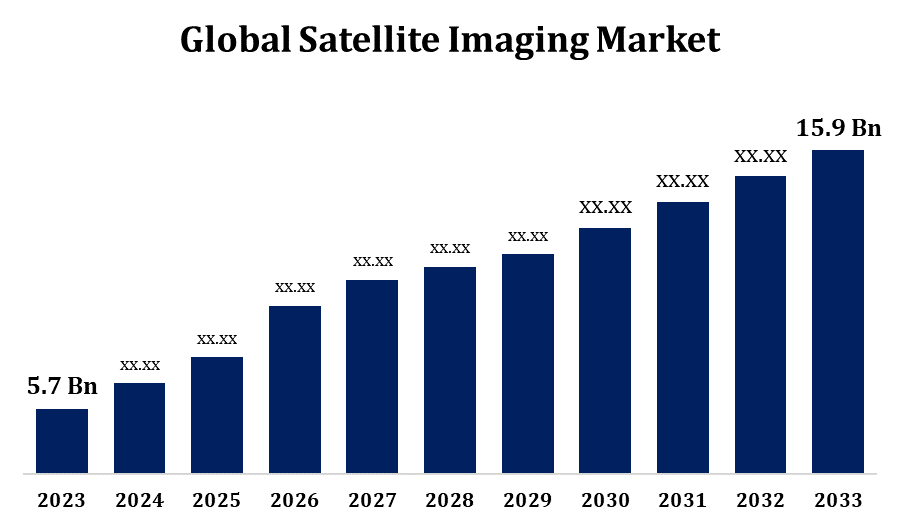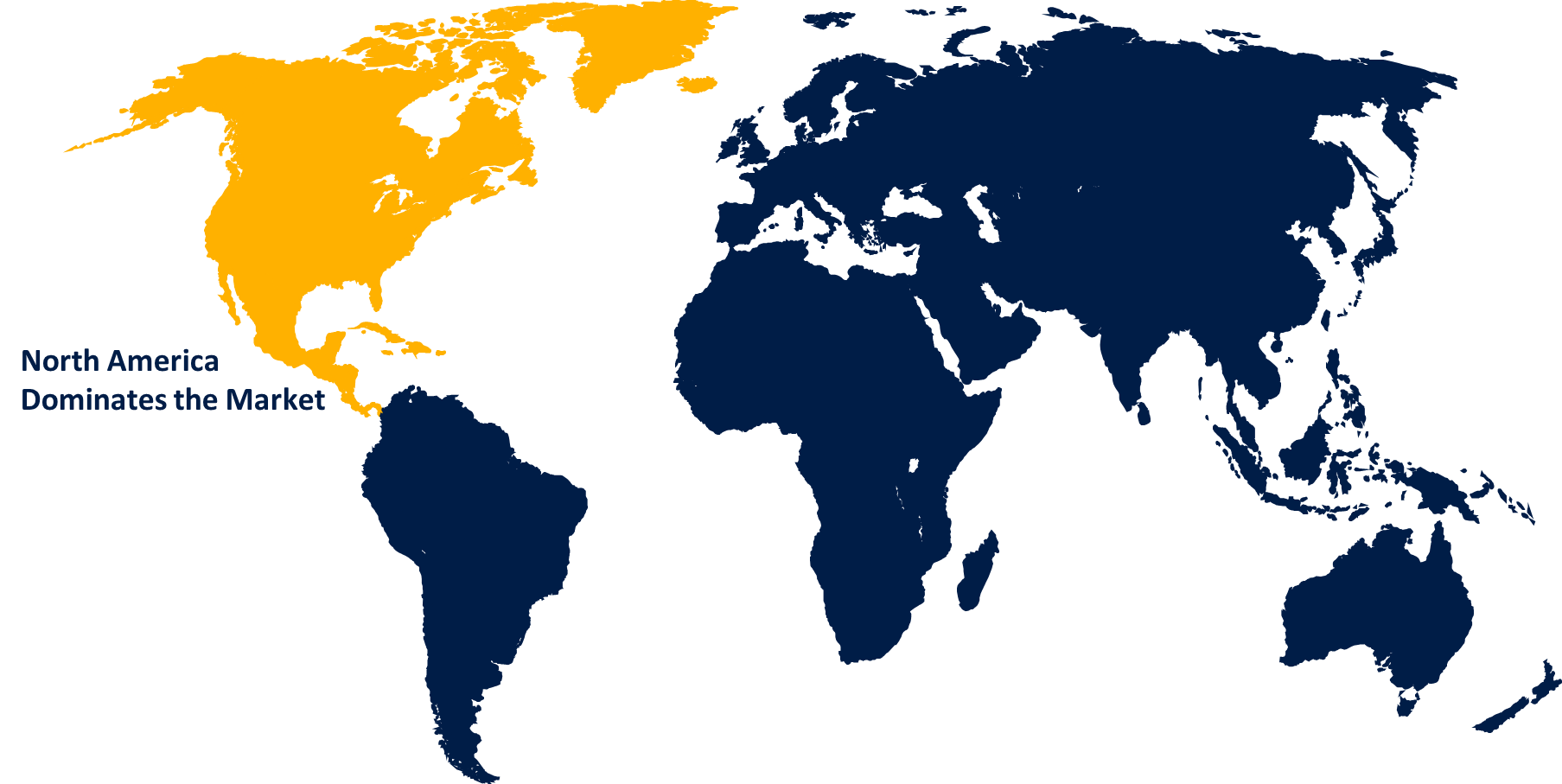Global Satellite Imaging Market Size To Worth USD 15.9 Billion By 2033 | CAGR of 10.80%
Category: Aerospace & DefenseGlobal Satellite Imaging Market Size To Worth USD 15.9 Billion By 2033
According to a research report published by Spherical Insights & Consulting, the Global Satellite Imaging Market Size to grow from USD 5.7 Billion in 2023 to USD 15.9 Billion by 2033, at a Compound Annual Growth Rate (CAGR) of 10.80% during the forecast period.

Get more details on this report -
Browse key industry insights spread across 200 pages with 110 Market data tables and figures & charts from the report on the "Global Satellite Imaging Market Size By Application (Geospatial Data Acquisition, Navigation & Mapping, Defense & Intelligence, Surveillance & Security, and Others), By End user (Government, Defense, Commercial, and Others), By Region, And Segment Forecasts, By Geographic Scope And Forecast to 2033." Get Detailed Report Description Here: https://www.sphericalinsights.com/reports/satellite-imaging-market
The need for satellite imagery has been growing in both the public and private sectors. Among other things, governments use satellite imaging for urban planning, environmental monitoring, and defence surveillance. Businesses use satellite photos for a variety of purposes, such as agricultural monitoring, disaster relief, and infrastructure construction. Satellite imagery is finding new applications in a multitude of fields. For example, satellite imagery enables precision farming, yield prediction, and crop monitoring in agriculture. In urban planning, satellite images are useful for monitoring urban sprawl, analysing land usage, and organising infrastructure. Satellite imagery is used in the energy sector for environmental impact assessments, pipeline monitoring, and site selection.
Satellite Imaging Market Value Chain Analysis
The process of designing, constructing, and testing spacecraft with imaging payloads is known as satellite manufacturing. Satellite manufacturers design spacecraft with a range of specifications, including picture quality, spectral bands, and orbital parameters, based on the requirements of the end customers and applications. Satellites need to be sent into orbit after construction is complete. Satellites are launched into designated orbits by launch firms. Following launch, satellites go through several processes to activate and commission their image systems. Satellites employ onboard imaging sensors, such as optical or synthetic aperture radar (SAR) equipment, to capture images of the Earth's surface. To take pictures, satellite passes over certain locations must be scheduled, and imaging parameters must be changed. Customers can get processed satellite imagery through a number of platforms, such as the internet. Satellite images are used in many different industries and applications, such as forestry, agriculture, urban planning, disaster management, transportation, and natural resource management.
Satellite Imaging Market Opportunity Analysis
Advances in satellite imaging technology, such as improved spectrum capabilities, data processing techniques, and higher-resolution sensors, present numerous opportunities for industry expansion. Investing in research and development (R&D) to produce innovative imaging techniques and applications can give companies a competitive advantage and help them adapt to changing customer demands. Value-added services can be offered to a range of applications and industries by developing integrated solutions that combine satellite imaging, machine learning, and real-time monitoring. Companies that specialise in satellite imaging can look into uncharted territories and industries where satellite data can provide illuminating insights and useful solutions. By using satellite imagery to reach remote and underprivileged places, opportunities arise to close gaps and promote sustainable development goals.
Companies in the industry may deploy satellites that have a greater number of spectral bands and a higher spatial resolution, enabling a more comprehensive and in-depth study of the surface of the Earth. One potential capacity that market players may develop is the ability to merge data from several sources, such as aerial surveys, ground sensors, and Internet of Things (IoT) devices, with satellite imaging. The capacity of providers to combine multi-source data sets to provide more comprehensive and practical insights for applications like infrastructure management, smart city planning, and natural resource monitoring is driving demand for integrated solutions. Through the application of advanced data analytics techniques such as artificial intelligence and machine learning, industry players can more accurately and efficiently derive valuable insights from satellite images.
The development, deployment, and maintenance of satellites for imaging applications come with hefty upfront and ongoing costs. High expenses for data processing, launch services, ground infrastructure, and satellite manufacturing can be a financial barrier for market players, particularly new and small- to medium-sized enterprises (SMEs). In the satellite imaging industry, a large number of businesses are engaged in intense competition to provide similar products and services. Intense rivalry can lead to decreased profit margins, commoditization of offerings, and pricing pressure. Additionally, market consolidation brought on by mergers, acquisitions, and partnerships may lessen the entry of new businesses and the diversity of the market.
Insights by Application
The geospatial data acquisition segment accounted for the largest market share over the forecast period 2023 to 2033. More precise, high-resolution satellite imagery with more spatial detail is becoming more and more necessary. As a result, satellite operators are investing in state-of-the-art imaging sensors capable of capturing high-definition pictures to meet the needs of several applications, such as infrastructure construction, urban planning, precision agriculture, and environmental monitoring. The players in the satellite imaging industry are always innovating and competing to differentiate their services for gathering geospatial data. The rivalry is driving investments in new satellite platforms, sensor technologies, data processing algorithms, and value-added services aimed at enhancing data quality, coverage, and usability for diverse end users and applications.
Insights by End User
The commercial segment accounted for the largest market share over the forecast period 2023 to 2033. The commercialization of satellite imaging has resulted in cost savings in launch services, data processing, and satellite construction, making satellite images more accessible and reasonably priced for a larger spectrum of users. Thanks to falling prices, satellite photos are becoming more and more accessible to startups, SMEs, and charitable organisations for a range of uses. Satellite images are being used by an increasing range of industries and applications, including forestry, agriculture, urban planning, infrastructure development, defence, telecommunications, and disaster management. In order to satisfy these companies' needs, the commercial segment leverages satellite imagery to deliver tailored solutions, value-added services, and actionable insights.
Insights by Region

Get more details on this report -
North America is anticipated to dominate the Satellite Imaging Market from 2023 to 2033. The commercial sector in North America uses satellite imagery extensively for a variety of uses. Agricultural, energy, mining, construction, insurance, and transportation are just a few of the industries that use satellite imaging for tasks including asset management, market analysis, infrastructure planning, crop monitoring, and risk assessment. The defence and intelligence communities in North America make extensive use of satellite imaging for reconnaissance, surveillance, and situational awareness. Governmental organisations, armed forces, and defence contractors employ high-resolution satellite images to track geopolitical trends, assess security risks, and support military operations. North America is home to a robust ecosystem of satellite imaging companies, research facilities, and innovation hubs that are committed to developing cutting-edge technology and applications.
Asia Pacific is witnessing the fastest market growth between 2023 to 2033. The Asia-Pacific region's satellite imaging market is growing rapidly because of the quick advancement of satellite technology, increased spending on space projects, and growing use of satellite imagery for a variety of applications. Numerous industries, including agriculture, urban planning, natural resource management, infrastructure development, and catastrophe monitoring, are anticipated to see growth in this market. In the Asia-Pacific commercial market, satellite imaging companies can offer a wide range of products and services that are tailored to the needs of local customers. In many different industries, including telecommunications, construction, mining, forestry, and agriculture, satellite imagery is utilised for land use planning, crop monitoring, infrastructure development, and site selection.
Recent Market Developments
- In December 2022, European Space Agency (ESA) scientists continually studied the Alps' ice cover, persistent snow area, and snow status features. to be more knowledgeable and skilled. This data was gathered by the Copernicus satellite.
Major players in the market
- BlackSky
- European Space Imaging
- Galileo Group, Inc.
- ImageSat
- L3Harris Technologies, Inc.
- Maxar Technologies Inc.
- Planet Labs Inc.
- Airbus S.A.S.
- SpaceKnow Inc.
- Telespazio France
Market Segmentation
This study forecasts revenue at global, regional, and country levels from 2023 to 2033.
Satellite Imaging Market, Application Analysis
- Geospatial Data Acquisition
- Navigation & Mapping
- Defense & Intelligence
- Surveillance & Security
- Others
Satellite Imaging Market, End User Analysis
- Government
- Defense
- Commercial
- Others
Satellite Imaging Market, Regional Analysis
- North America
- US
- Canada
- Mexico
- Europe
- Germany
- Uk
- France
- Italy
- Spain
- Russia
- Rest of Europe
- Asia Pacific
- China
- Japan
- India
- South Korea
- Australia
- Rest of Asia Pacific
- South America
- Brazil
- Argentina
- Rest of South America
- Middle East & Africa
- UAE
- Saudi Arabia
- Qatar
- South Africa
- Rest of Middle East & Africa
About the Spherical Insights & Consulting
Spherical Insights & Consulting is a market research and consulting firm which provides actionable market research study, quantitative forecasting and trends analysis provides forward-looking insight especially designed for decision makers and aids ROI.
Which is catering to different industry such as financial sectors, industrial sectors, government organizations, universities, non-profits and corporations. The company's mission is to work with businesses to achieve business objectives and maintain strategic improvements.
CONTACT US:
For More Information on Your Target Market, Please Contact Us Below:
Phone: +1 303 800 4326 (the U.S.)
Phone: +91 90289 24100 (APAC)
Email: inquiry@sphericalinsights.com, sales@sphericalinsights.com
Contact Us: https://www.sphericalinsights.com/contact-us
Follow Us: LinkedIn | Facebook | Twitter
Need help to buy this report?